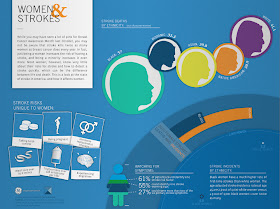Silent Strokes
The symptoms of a stroke are sometimes obvious, like numbness or weakness on one side of the face, trouble speaking, difficulty walking, and vision problems. Some strokes, though, pass completely unnoticed. But even these can have a significant and lasting effect on memory, reports the June 2012 issue of the Harvard Women’s Health Watch.
These so-called silent strokes create pinpoints of dead cells in the brain. The damaged areas are smaller than with a traditional stroke, and often don’t affect areas of the brain associated with movement or speech.
During a typical ischemic stroke, a blood clot blocks a blood vessel that feeds part of the brain. Without a steady supply of blood, cells in that area malfunction and may die. Symptoms that appear reflect the functions that were controlled by the affected part of the brain. A hemorrhagic stroke caused by a burst blood vessel does the same thing.
During a silent stroke, the interruption in blood flow occurs in part of the brain that doesn’t control any vital functions. Although it doesn’t cause any obvious symptoms—most people who’ve had a silent stroke have no idea it occurred—the damage does show up on an MRI or CT scan.
Silent strokes could interrupt the flow of information in the brain needed for memory, especially if several of these strokes occur over time (which is the most common scenario). Damage from silent strokes can accumulate, leading to more and more memory problems.
Women and Strokes
Is there anything a woman can do when faced with a stroke that has no symptoms, and that can only be found on an MRI or CT scan? “I think that it should make people aware that it’s imperative to manage risk factors,” says Karen Furie, associate professor at Harvard Medical School and director of the Massachusetts General Hospital Stroke Service.
This means:
*controlling blood pressure and diabetes
*not smoking
*keeping cholesterol levels in check
*aiming for a healthy weight
*managing atrial fibrillation
If you are experiencing signs of memory loss, don’t dismiss it as a normal part of aging. See your doctor for testing to make sure the issue isn’t a silent stroke.
Who is at risk for stroke?
Of the approximately 795,000 strokes that occur in the United States each year, about 610,000 are first strokes, and 185,000 are recurrent attacks. Although the incidence of stroke has declined significantly since the 1960s, the strokes that do happen are just as severe. In fact, stroke is a leading cause of serious, long-term disability in the United States.
The odds of having a stroke more than double every 10 years after age 55. More than two-thirds of strokes involve people over 65. If you have a stroke, the risk of dying from it also increases with age: 88% of deaths from stroke are in people 65 and older.
Although you can’t change your age, gender, or race, you can take steps to reduce other risk factors for stroke, especially ischemic stroke. The most common risk factors for both ischemic stroke and TIAs are high blood pressure (hypertension), diabetes, unhealthy cholesterol levels, obesity, and cigarette smoking. All of these factors affect the health of your blood vessels—increasing the risk not only of stroke, but also of heart disease. That’s why medications and dietary changes you make to reduce the risk of an ischemic stroke will also benefit your heart.
Some types of hemorrhagic stroke are more likely to occur in people with chronic high blood pressure.. But other types of hemorrhagic stroke seemingly strike out of the blue. Although abnormal blood vessel conditions such as an aneurysm (a bubble in the blood vessel wall that could rupture) or an arteriovenous malformation (an abnormal tangle of blood vessels) increase the risk, these conditions may only be discovered inadvertently while you are undergoing testing for something else—or may not be discovered until a stroke occurs.
If you are at risk of having a stroke, prepare for an emergency by displaying important phone numbers prominently next to the telephone, such as the numbers of your doctor and a relative or close friend who should be contacted.
Stroke warning signs and symptoms
Everyone should learn the following warning signs of stroke. If you experience any of these symptoms, immediately dial 911 or go to an emergency room:- weakness in an arm, hand, or leg
- numbness on one side of the body
- sudden dimness or loss of vision, particularly in one eye
- sudden difficulty speaking
- inability to understand what someone is saying
- dizziness or loss of balance
- sudden, lasting, excruciating headache.
http://www.ncbi.nlm.nih.gov/pubmedhealth/PMH0001740/
www.health.harvard.edu





No comments:
Post a Comment